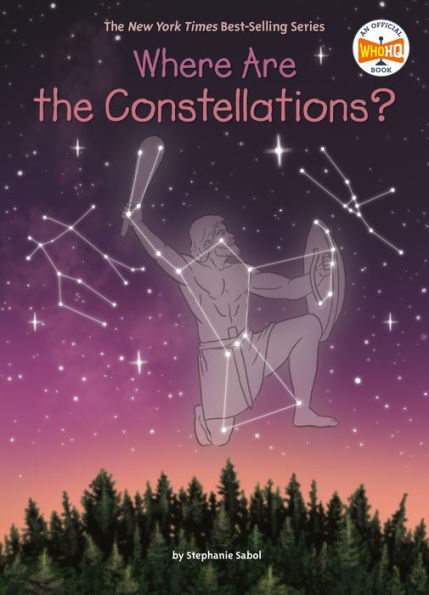Where Are the Constellations?
Calling all stargazers, this addition to the New York Times bestselling series is sure to be the perfect book for you!
From the #1 New York Times Best-Selling Who Was? series comes Where Is?, a series that tells the stories of world-famous landmarks and natural wonders and features a fold-out map!
Ancient people from many different cultures--Greek, Roman, Mezo-American, Arab--all looked up and imagined pictures in the sky by "drawing" a line from one star to another, like a connect-the-dots puzzle. These star pictures--constellations--represented myths and legends from the various cultures that still fascinate us today.
Author of the tremendously popular Where Is Our Solar System? Stephanie Sabol relates many of the most popular constellation stories and explains what stars actually are: how they formed, why they die, and how they're grouped into constellation families.
1137854557
From the #1 New York Times Best-Selling Who Was? series comes Where Is?, a series that tells the stories of world-famous landmarks and natural wonders and features a fold-out map!
Ancient people from many different cultures--Greek, Roman, Mezo-American, Arab--all looked up and imagined pictures in the sky by "drawing" a line from one star to another, like a connect-the-dots puzzle. These star pictures--constellations--represented myths and legends from the various cultures that still fascinate us today.
Author of the tremendously popular Where Is Our Solar System? Stephanie Sabol relates many of the most popular constellation stories and explains what stars actually are: how they formed, why they die, and how they're grouped into constellation families.
Where Are the Constellations?
Calling all stargazers, this addition to the New York Times bestselling series is sure to be the perfect book for you!
From the #1 New York Times Best-Selling Who Was? series comes Where Is?, a series that tells the stories of world-famous landmarks and natural wonders and features a fold-out map!
Ancient people from many different cultures--Greek, Roman, Mezo-American, Arab--all looked up and imagined pictures in the sky by "drawing" a line from one star to another, like a connect-the-dots puzzle. These star pictures--constellations--represented myths and legends from the various cultures that still fascinate us today.
Author of the tremendously popular Where Is Our Solar System? Stephanie Sabol relates many of the most popular constellation stories and explains what stars actually are: how they formed, why they die, and how they're grouped into constellation families.
From the #1 New York Times Best-Selling Who Was? series comes Where Is?, a series that tells the stories of world-famous landmarks and natural wonders and features a fold-out map!
Ancient people from many different cultures--Greek, Roman, Mezo-American, Arab--all looked up and imagined pictures in the sky by "drawing" a line from one star to another, like a connect-the-dots puzzle. These star pictures--constellations--represented myths and legends from the various cultures that still fascinate us today.
Author of the tremendously popular Where Is Our Solar System? Stephanie Sabol relates many of the most popular constellation stories and explains what stars actually are: how they formed, why they die, and how they're grouped into constellation families.
15.99
In Stock
5
1

Where Are the Constellations?
112
Where Are the Constellations?
112
15.99
In Stock


Product Details
| ISBN-13: | 9780593223741 |
|---|---|
| Publisher: | Penguin Young Readers Group |
| Publication date: | 07/06/2021 |
| Series: | Where Is? Series |
| Pages: | 112 |
| Sales rank: | 402,219 |
| Product dimensions: | 5.81(w) x 7.94(h) x 0.43(d) |
| Lexile: | 890L (what's this?) |
| Age Range: | 8 - 12 Years |
About the Author
From the B&N Reads Blog
